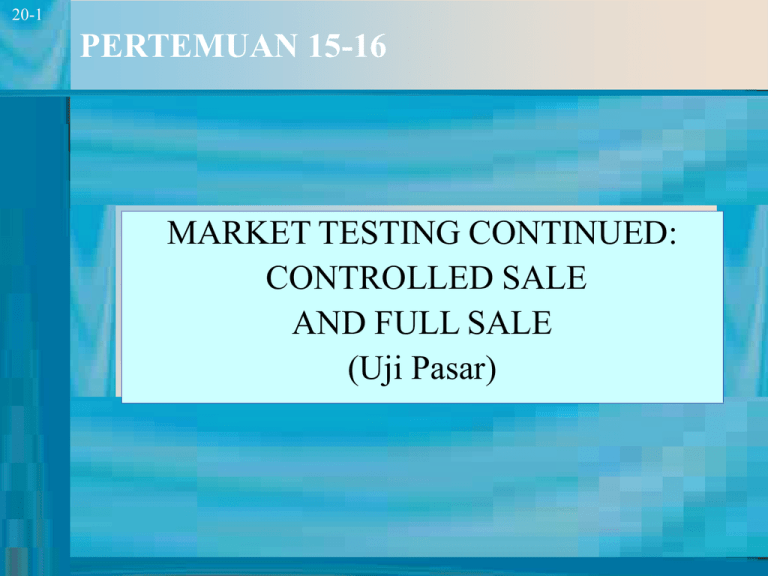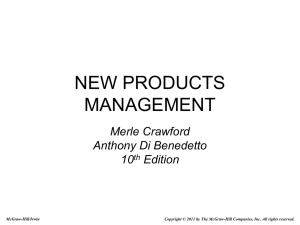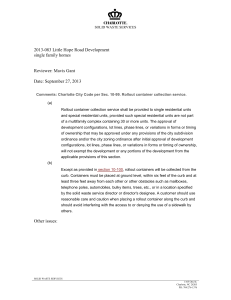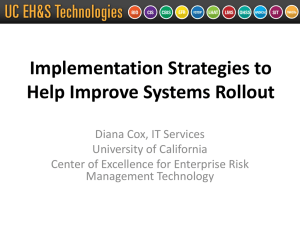PERTEMUAN 15-16 MARKET TESTING CONTINUED: CONTROLLED SALE AND FULL SALE
advertisement

120-1 PERTEMUAN 15-16 MARKET TESTING CONTINUED: CONTROLLED SALE AND FULL SALE (Uji Pasar) 220-2 TIK • Mahasiswa mampu mendefinisikan metode controlled dan full sale 320-3 A-T-A-R and the Market Testing Methods Figure 20.1 420-4 Controlled Sale by Informal Selling • Used for business-to-business products, also consumer products sold directly to end users. • Train salespeople, give them the product and the selling materials, and have them make calls (in the field, or at trade shows). • Real presentations, and real sales, take place. 520-5 Controlled Sale by Direct Marketing More secrecy than by any other controlled sale method. The feedback is almost instant. Positioning and image development are easier because more information can be sent and more variations can be tested easily. It is cheaper than the other techniques. The technique matches today's growing technologies of credit card financing, telephone ordering, and database compilation. 620-6 Controlled Sale by Minimarkets • Select a limited number of outlets -- each store is a minicity or “minimarket.” • Do not use regular local TV or newspaper advertising, but chosen outlets can advertise it in its own flyers. • Can do shelf displays, demonstrations. • Use rebate, mail-in premium, or some other method to get names of purchasers for later follow-up. 720-7 Controlled Sale by Scanner Market Testing • Audit sales from grocery stores with scanner systems -- over a few markets or national system. • Sample uses: – Can use the data as a mini-market test. – Can compare cities where differing levels of sales support are provided. – Can monitor a rollout from one region to the next. 820-8 Minimarkets and Scanner Testing: IRI’s BehaviorScan and InfoScan • Cable TV interrupt privileges • Full record of what other media (such as magazines) go into each household • Family-by-family purchasing • Full record of 95 percent of all store sales of tested items from the check-out scanners • Immediate stocking/distribution in almost every store is assured by the research firm. Result: IRI knows almost every stimulus that hits each individual family, and it knows almost every change that takes place in each family's purchase habits. 920-9 The Test Market • Several test market cities are selected. • Product is sold into those cities in the regular channels and advertised at representative levels in local media. • Once used to support the decision whether to launch a product, now more frequently used to determine how best to do so. 20-10 10 Pros and Cons of Test Marketing Advantages: • Risk Reduction – monetary risk – channel relationships – sales force morale • Strategic Improvement – marketing mix – production facilities Disadvantages: • Cost ($1 mill+) • Time (9-12 months+) – hurt competitive advantage – competitor may monitor test market – competitor may go national • Competitor can disrupt test market 20-11 11 A Risk of Test Marketing: “Showing Your Hand” Figure 20.2 •Kellogg tracked the sale of General Foods' Toast-Ems while they were in test market. Noting they were becoming popular, they went national quickly with PopTarts before the General Foods' test market was over. •After having invented freeze-dried coffee, General Foods was test-marketing its own Maxim brand when Nestle bypassed them with Taster's Choice, which went on to be the leading brand. •While Procter & Gamble were busy test-marketing their soft chocolate chip cookies, both Nabisco and Keebler rolled out similar cookies nationwide. •The same thing happened with P&G’s Brigade toilet-bowl cleaner. It was in test marketing for three years, during which time both Vanish and Ty-D-Bol became established in the market. •General Foods' test market results for a new frozen baby food were very encouraging, until it was learned that most of the purchases were being made by competitors Gerber, Libby, and Heinz. 20-12 12 The Rollout • Select a limited area of the country (one or several cities or states, 25% of the market, etc.) and monitor sales of product there. • Starting areas are not necessarily representative – The company may be able to get the ball rolling more easily there – The company may deliberately choose a hard area to sell in, to learn the pitfalls and what really drives success. • Decision point: when to switch to the full national launch. 20-13 13 Types of Rollout • • • • By geography (including international) By application By influence By trade channel 20-14 14 Patterns of Information Gained During Rollout Figure 20.4 20-15 15 Risks of Rollout • May need to invest in full-scale production facility early. • Competitors may move fast enough to go national while the rollout is still underway. • Problems getting into the distribution channel. • Lacks national publicity that a full-scale launch may generate. 20-16 16 Probable Future for Market Testing Methods Figure 20.5 • Test marketing • Pseudo sale • Minimarket • Rollout (“dinosaur”) (incomplete) (flexibility & variety) (small, fast, flexible) 20-17 17 Summary ….




